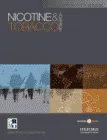| Titre : | Adding tobacco to cannabis - its frequency and likely implications (2011) |
| Auteurs : | R. E. BELANGER ; C. AKRÉ ; E. KUNTSCHE ; G. GMEL ; J. C. SURIS |
| Type de document : | Article : Périodique |
| Dans : | Nicotine and Tobacco Research (Vol.13, n°8, August 2011) |
| Article en page(s) : | 746-750 |
| Langues: | Anglais |
| Discipline : | EPI (Epidémiologie / Epidemiology) |
| Mots-clés : |
Thésaurus géographique SUISSEThésaurus mots-clés ESPAD ; ENQUETE ; ADOLESCENT ; CANNABIS ; TABAC ; PREVALENCE ; POLYCONSOMMATION ; TYPE D'USAGE |
| Résumé : |
INTRODUCTION: Young cannabis users are at increased risk of later cigarette initiation and progression to nicotine addiction. The present study addresses the frequency at which mulling (adding tobacco to cannabis smoked as joints) is performed and in which way this practice varies according to cigarette smoking status.
METHODS: Data were issued from the Swiss 2007 European School Survey Project on Alcohol and other Drugs (ESPAD). A total of 881 past month cannabis users (mean age 15 years, boys 60.1%) were inquired on mulling using an anonymous self-administered questionnaire. Participants were further grouped according to their cigarette smoking status (daily, occasional, former, and never-smokers). RESULTS: Four of every 5 cannabis users depicted mulling as frequently performed. The highest occurrence was found among daily cigarette smokers (DSC; 90.3%), while former cigarette smokers reported the lowest (58.9%). The multinomial logistic regression showed DSC more likely reporting mulling as frequent compared with never-smokers (risk ratio = 3.56 [95% CI 1.55-8.21]). CONCLUSIONS: Mulling appears to be a very common process among young cannabis users, especially among concomitant cigarette smokers. Nevertheless, the majority of cigarette abstainers also reported frequently adding tobacco to the cannabis they smoke. Because it may represent a significant exposition to nicotine, mulling should be taken into account when assessing substance use among adolescents and in supporting their quitting attempts. |
| Domaine : | Drogues illicites / Illicit drugs ; Tabac / Tobacco / e-cigarette |
| Affiliation : | Research Group on Adolescent Health, Institute for Social and Preventive Medicine (IUMSP), Epalinges, Switzerland |
 Accueil
Accueil



